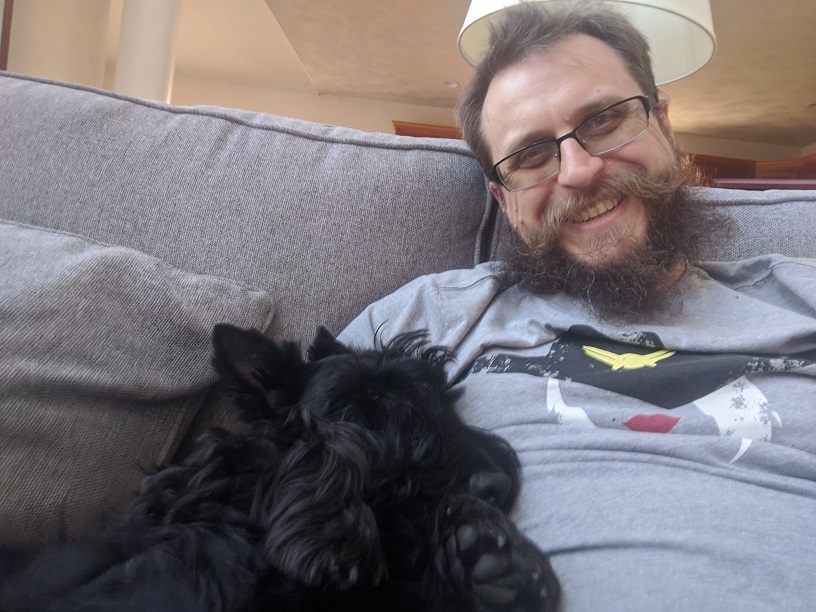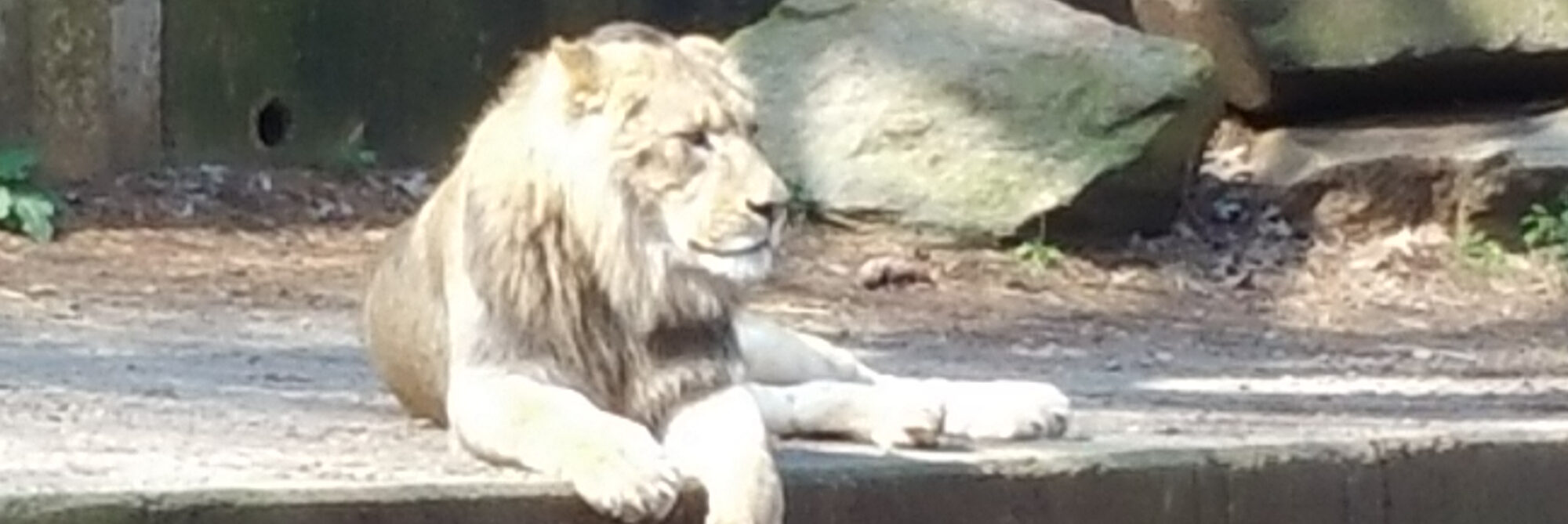It’s only recently that I’ve starting embracing Satanism, but it’s precisely for that reason that I feel the need to write this. Satanic Ritual is traditionally a very private process unique to the individual practicing it. My Sol Invictus may not be representative of others, but that does not make it any less valid. At the same time, I can’t expect others to understand the impact of celebrating a holiday that I quite literally designed on my own. I hope that maybe by describing what Sol Invictus means to me that I can help others to be more inclusive of people like me during the holiday season.
To understand the role of Sol Invictus, it might be be helpful to first define “Satanic Ritual”. It’s most certainly not like what you see in the movies. In fact, much of Satanism is actually built around the symbolic opposite of these depictions. One of the defining characteristics of Satanists as a group is that we are fundamentally opposed to the idea of “blood sacrifice”. It’s why we’re drawn to the symbol of “the rebel” over “the lamb” in the first place. The purpose of a Satanic Ritual is consciously align the symbolism of one’s surroundings with ones that are needed to empower oneself toward self-actualization.
I hate Christmas.
As a result, I’ve intentionally constructed my Sol Invictus celebration to make it as emotional distant from Christmas as possible. The two holidays are inherently incompatible by design. I will never find joy in Christmas, only pain. Sol Invictus is about accepting that I feel this way for legitimate reasons and providing myself with the tools I need to overcome that adversity.
My first Sol Invictus as a Satanist was really about the act of setting aside time for myself to reflect on why I hated Christmas so badly. I tried to objectively describe which holiday symbols I hated “with a whole heart” and why. Once I had established a list of my intellectual enemies, I scoured the great depths of Wikipedia for symbols with which to destroy them. In the process, I somehow wound up with a page full of notes on the laws of thermodynamics.
Now that I’m coming full circle with the Satanic calendar, Sol Invictus has symbolically solidified it’s role as my Fire holiday. At first I was hesitant to use such a cliché, but the first step towards understanding Fire is that temperature is Transitive so I thought my symbols should be as well. The four elements align close enough with the four states of matter that I allowed myself to just roll with it. It’s hard to associate an emotion with Plasma, but Fire is alive and will consume anything in its path to stay that way. I can feel its Heat.
Perhaps it might help to place these holidays in Order with common symbolic associations:
- For the Spring Equinox, I celebrate “Hexennacht” which I associate with Earth and Hunger.
- For the Summer Solstice, I celebrate “Litha” which I associate with Water and Love.
- For the Fall Equinox, I celebrate “Halloween” which I associate with Wind and Fear.
- For the Winter Solstice, I celebrate “Sol Invictus” which I associate with Fire and Anger.
Somewhere in this mess of pagan mythology and pop culture references I recognized a pattern that had faced many times before. This was my “grief cycle”. It’s a never ending War that engages me in battle out of nowhere and demands emotional labor that I’m ill equipped to provide. To love someone is to fear losing them.
Sol Invictus is about leveraging my anger to fight my way out of negative feeling of guilt, shame, and self-doubt. It’s about providing myself space to meditate on the obstacles to my happiness and how best to destroy them through Knowledge. It’s a process of reflection to learn how I can leverage my survival instincts towards rational self-interests.
Maybe part of the miscommunication here is my anger gets perceived as unhappiness. Please don’t assume that’s the case. If anything, I’ve come to accept that I enjoy being angry sometimes. It helps me get Work done. I even find myself chasing the thrill of the fight for that “in the zone” feeling that accompanies it. Think of me like a big puppy with a lot of Energy. I’m happy to play with you, but “play” and “fight” are innately intertwined and I sometimes forget how sharp my fangs are.
How does one buy a gift for a puppy? Pursue the aisle for something cute and fluffy that fills your heart with joy? What kind of reaction do you expect to receive in response to this present? Very soon, that stuffed animal’s entrails will become its extrails. Will you scold the puppy for this? Or will you accept that it is in the puppy’s nature to rip out that squeaker as swiftly as possible?
In reality, my opposition to gifts probably is a minority opinion amongst Satanists. Arguably the LaVeyan philosophy is to test the sincerity of the giver’s altruism by accepting the gift without reciprocation. For me, this feels dishonest so I typically ask those around me to “not get me anything”. If I ask this of you, it’s because I care about you enough to tell you the truth. I’m the type of puppy that finds myself moping atop a pile of cotton balls and shredded cloth with eyes full of shame.
I literally have boxes full of Christmas presents I’ve been given in the past that have gone untouched for years. I should honestly just throw them away at this point but I don’t because of some irrational sense of guilt. Quite honestly, I’m tired of feeling that way and trying to learn how to say goodbye to things. Sol Invictus has become part of that process. I understand that some people take pleasure in gift giving at this time of year but it’s hard being asked for a list of things that I want while I’m simultaneously struggling to understand my own needs.
When you need something it doesn’t carry quite the same meaning as a gift. This is why you’re likely buy the puppy a toy rather than kibble in the first place, because the puppy needs to be fed anyway. In reality though, the toy is just filling a different kind of need. That puppy was going to destroy something one way or another, it was only a matter of “what” and “how”. You can’t take the Chaos out of the puppy, so you just do your best to redirect it with the toy. At that point, is the gift really a gift or is it an act of manipulation?
Is this how other people view Halloween candy? Let’s flip the script for a second and imagine an extreme version of Trick-or-Treating. Every year, the neighborhood bullies systematically test each house on the block for candy quality. If you fail to provide everyone with a suitable offering, then they TP your house every night until you move out. Since the demand for full-size chocolate bars has skyrocketed, so have the prices. Some of your neighbors are living off instant noodles all year round just to ensure they can afford enough Snickers to keep the peace.
If this were my only experience with Halloween, I’d probably hate it too. Instead, my version of Halloween is closer to a secular version of “Dia de los Muertos”. The candy is tool for symbolically externalizing my grieving process. It’s about remembering what brought joy to the people who are important to me. It’s about allowing myself space to hope that the werewolf knocking at the door might secretly be someone I love. I know that my dead grandmother is never coming to get these Werther’s, but maybe she might still manage to bring a moment of happiness to some random kid by proxy. The gift has already provided me with some small emotional fulfillment independently of the act of giving it away.
It’s not impossible for me to imagine a world where I’d be okay with “Sol Invictus Gifts”, but my experiences with “Christmas Gifts” are too similar to the extreme Trick-or-Treating described above. As a teenager, I wasn’t as open with my beliefs as I am now. Revealing myself as an atheist was often instant exile from a social clique. Every day from Thanksgiving to Christmas, I feel a needed to armor myself up for situations in which I might be “outed”. I lived in fear that I’d be put on the spot by receiving a gift from someone I’m not particularly close with. Do I lie to them with smile or tell them my honest beliefs? I feel more like I’m being tested for compliance than the beneficiary of an altruistic act. This is especially true when it happens at school or work.
One of my worst experiences was to being invited to a “Christmas Potluck” by a supervisor. When I tried to say I couldn’t make it, it got upgraded to a meeting and became mandatory. After forcing me to concede that I’d stay for the meeting but leave immediately after, they proceeded to ask me how I’d be contributing to the potluck. When you don’t give me the option to say “no”, that’s when it becomes oppressive. I’m not usually one to bite the hand that feeds me, but there are limits to what I’m willing to tolerate when cornered.
While we’re at it, can we stop the act of pretending to have a “Holiday Party” when it’s really a “Christmas Party”? You don’t get you use the general term when there’s only one being represented. Do people really think we won’t notice the lack of Hanukkah or Kwanza decorations at the event? I do. If you feel left out too, know that you have my sympathy and solidarity. One of the frustrating experiences for me a young atheist was that I never even had a symbol to be represented with around the holidays. I’m lucky that my real friends recognize this and point me towards “the Bah-Humbug Room”. Sol Invictus is all about empowering myself to reclaim the space that belongs to me. Every puppy deserves a play pen.
In summary, here’s what you should know about this hip new (old?) Satanic holiday called “Sol Invictus”:
- My Sol Invictus is December 25th. Reclaiming this specific day is important to me personally, but other Satanists may have entirely different customs.
- Rituals vary widely among Satanists, but we generally enjoy good food, good drink, and good company like anybody else. Acknowledging human nature is a common entry point to Satanism.
- Understand that sometimes Satanists will need time alone to engage in self-reflection. It may be helpful to provide a quiet place for contemplation as needed.
- Be conscious of power dynamics at school or work. Context can make a big difference in how holiday symbols are interpreted.
- Provide a way to “opt out” of activities with minimal effort. The Satanist doesn’t owe you an explanation of their personal trauma.
As a bonus for reading this far, here’s a photo of me and my friend Dougal:

Dougal understands that he might need to be separated from the mini-humans for safety’s sake but wants you to remember that puppies need attention too.
If you’re a Satanist here looking for advise on how to build your own holiday ritual, here are some of the resources I found helpful:
- Anton LaVey, The Satanic Bible. Whether you find yourself leaning towards The Church of Satan or The Satanic Temple, this feels like required reading. It’s important to understand the role this work played relative to the “Satanic Panic” of the 80s. Decide for yourself which ideas to keep and which to destroy.
- bell hooks, All About Love. In order to look at LaVey objectively, I found myself routinely comparing him with hooks. They present dramatically different perspectives on life but share a common philosophy of self-love.
- Shiva Honey, The Devil’s Tome. This was a convenient resource for designing my own rituals. Having a basic framework in place for the holiday allowed me to focus on how to make it work for me.
- Ernestine Hayes, The Tao of Raven. In my quest to celebrate the sun, it would be remiss of me not to mention the inspiration I found in Raven. Here I learned how I could be devious and practical at the same time.
- Shannon Lee, Be Water, My Friend. It’s impossible to understand Fire without also understanding its relation to Water. Lee provides many practical examples of using self-affirmations to reach one’s objectives.
- Pull from whatever sources you enjoy! My holidays would up being influenced by Donnie Darko, Wandavision and Final Fantasy. The benefit to having your own symbols is that you get to decide what they mean.
Ave Sol Invictus! And Happy Holidays to all!




